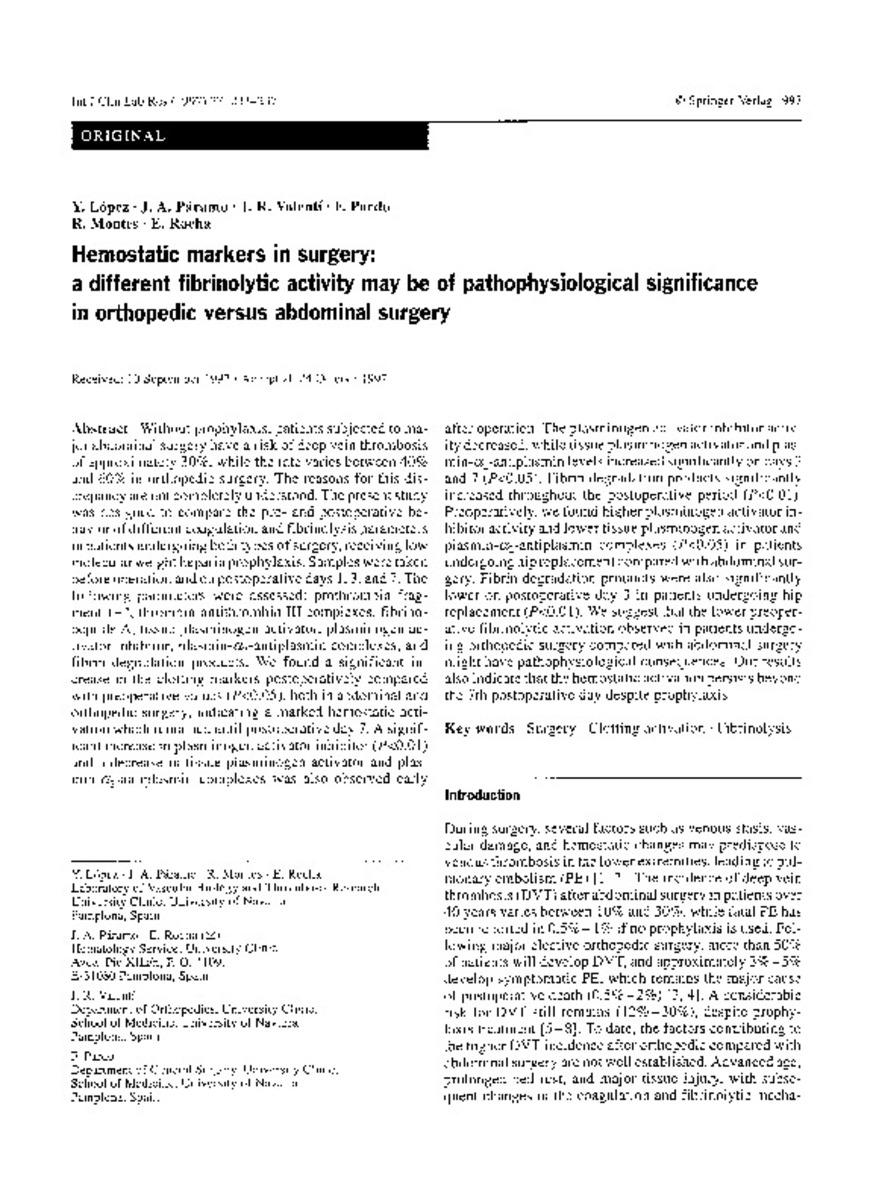Hemostatic markers in surgery: a different fibrinolytic activity may be of pathophysiological significance in orthopedic versus abdominal surgery
Keywords:
Surgery
Clotting activation
Fibrinolysis
Publisher:
Springer Verlag
Citation:
Lopez Y, Paramo JA, Valenti JR, Pardo F, Montes R, Rocha E. Hemostatic markers in surgery: a different fibrinolytic activity may be of pathophysiological significance in orthopedic versus abdominal surgery. Int J Clin Lab Res 1997;27(4):233-237.
Statistics and impact
0 citas en

0 citas en

Items in Dadun are protected by copyright, with all rights reserved, unless otherwise indicated.







